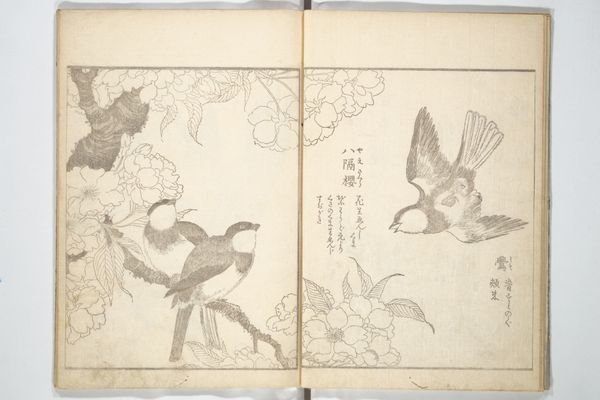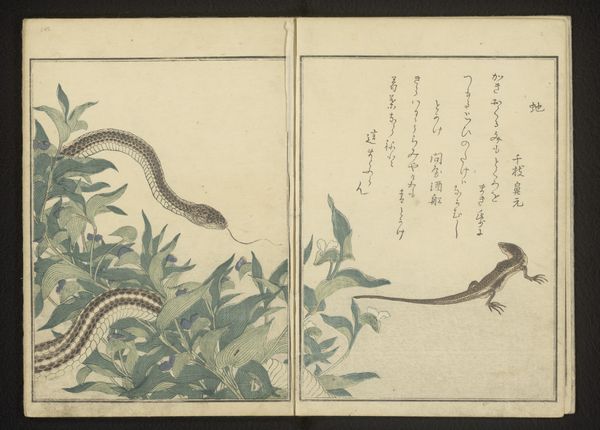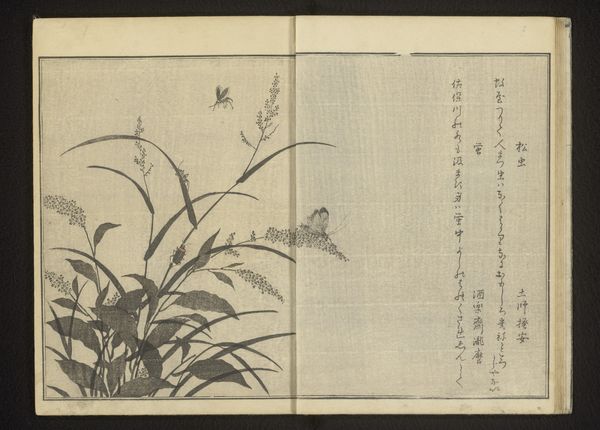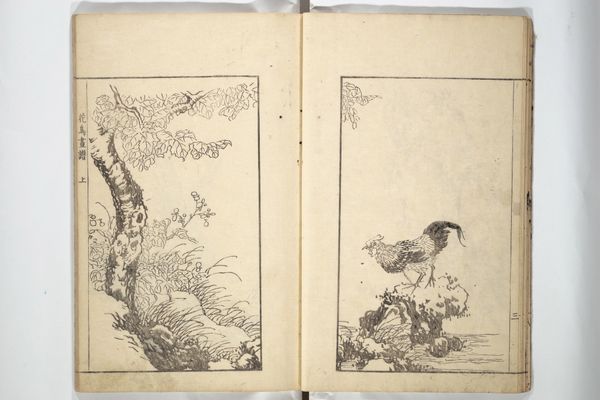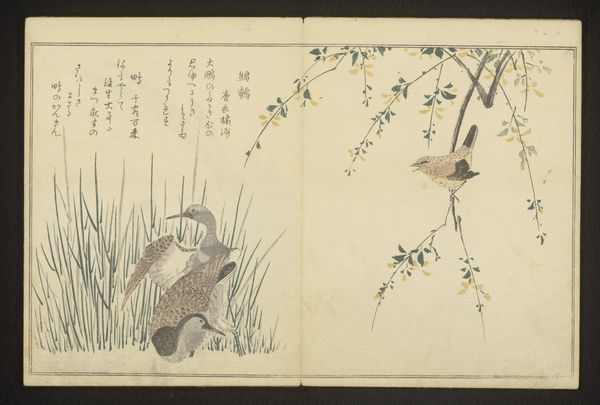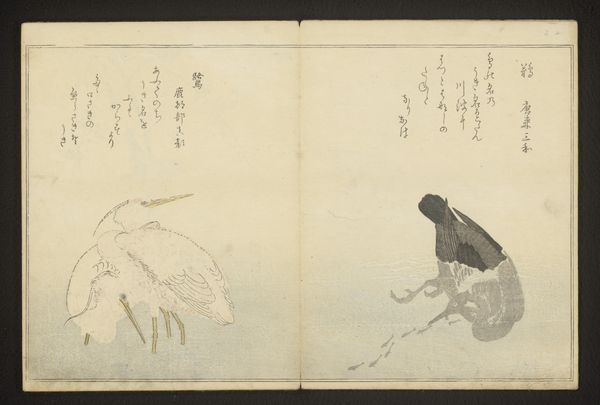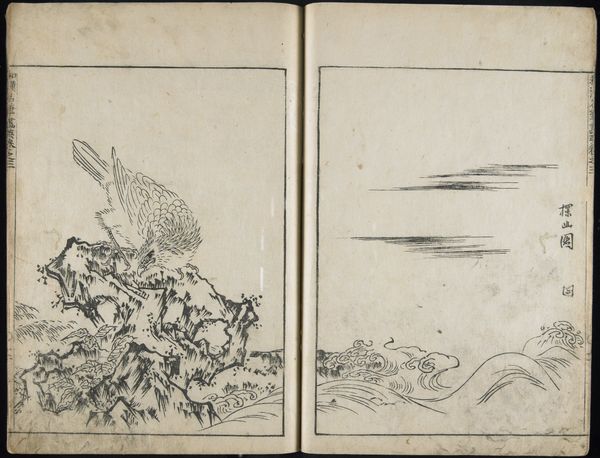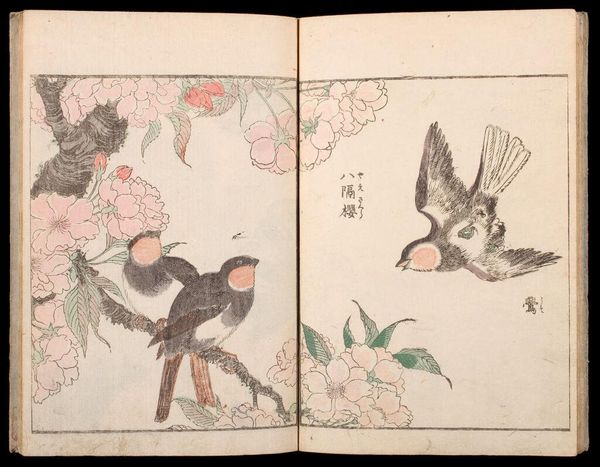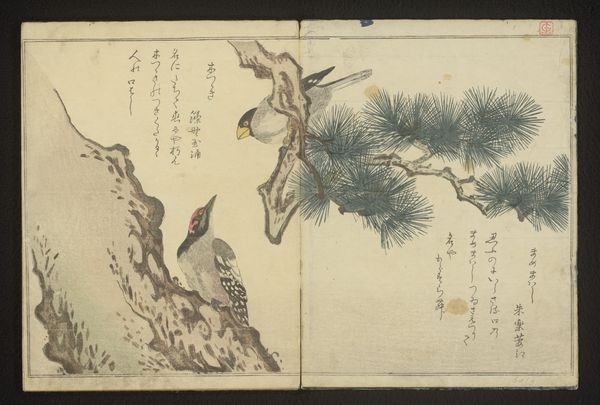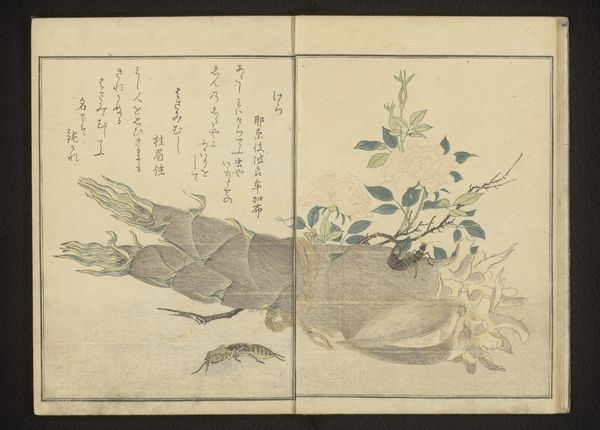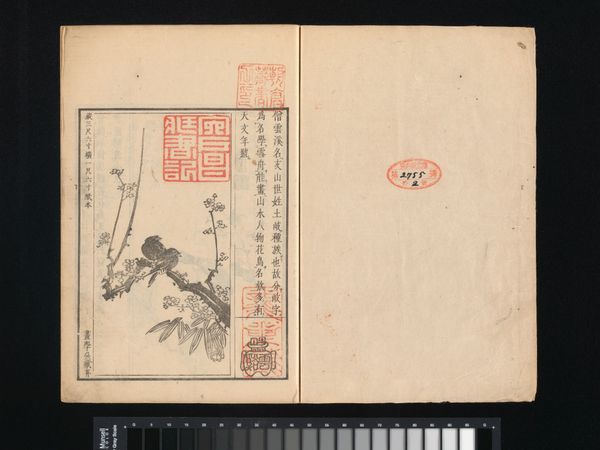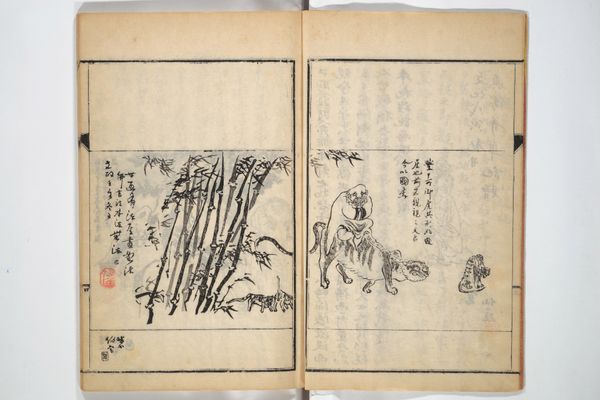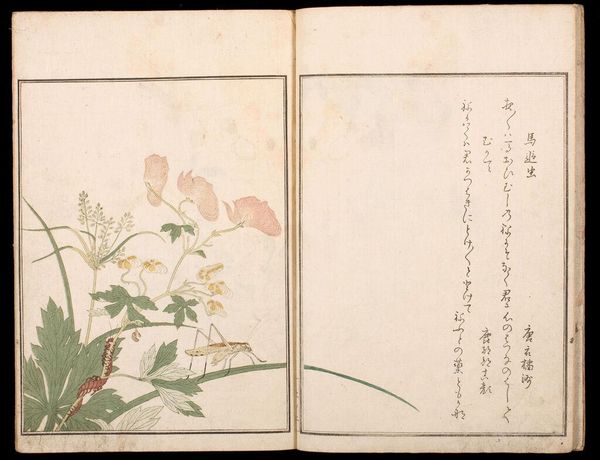
print, woodblock-print
# print
#
asian-art
#
landscape
#
ukiyo-e
#
japan
#
figuration
#
woodblock-print
Dimensions: 5/16 x 5 15/16 x 8 3/4 in. (0.8 x 15.1 x 22.2 cm)
Copyright: Public Domain
Curator: This serene scene, displayed within an open book, invites us to explore the elegance of Japanese Ukiyo-e prints. The piece, "Pictures of Birds and Flowers vol. 2," crafted in 1849 by Katsushika Taito II, presents delicate woodblock prints of birds amidst foliage. Editor: I am immediately struck by the stillness; a kind of melancholic grace. The palette is so restrained, with those subdued pinks and greys evoking a sense of quiet contemplation. Curator: Ukiyo-e, or "pictures of the floating world," often depicted transient pleasures—beauty, nature, and theatrical scenes. The crane, a symbol of longevity and good fortune, is central here. Its poised presence tells a narrative woven deeply into Japanese cultural symbolism. Editor: Note how the composition is divided by the book's spine, yet each side mirrors the other through its subject: a bird, stylized vegetation, and textual inscription. This reflects a broader understanding of the relationship between text and image within this art form, and its accessibility due to printmaking processes. What social function did works like this perform? Curator: They would have circulated amongst the growing merchant class during the Edo period, representing a cultural shift and democratizing art access. Such imagery offered not just beauty but reinforced social values, subtly influencing the aspirations and collective dreams of its audience. These prints connected individuals to nature, history, and the ideals of their time. Editor: Thinking about it in terms of public art, mass-produced in woodblock, gives the crane a new kind of meaning: as an accessible and repeated icon. It highlights how certain emblems or ideas achieve wide cultural distribution through image making. Does the cultural weight that it carried then persist, I wonder? Curator: Absolutely. The symbolic language, the artistic skill... they endure. We see it now in everything from contemporary art to design. Consider the crane's presence as a symbol of resilience and hope even today. We’re always searching for meaning in symbolic gestures. Editor: So true. Considering this artwork and its history underscores how images both reflect and mold our societies over time. It offers an aesthetic delight and serves as a lens onto the politics and aesthetics of its own world.
Comments
No comments
Be the first to comment and join the conversation on the ultimate creative platform.

